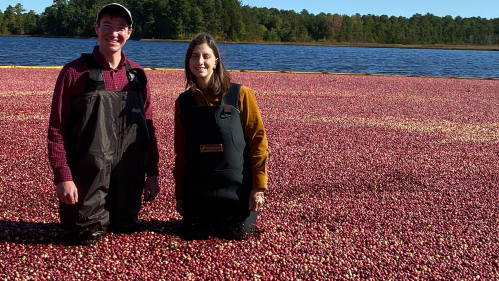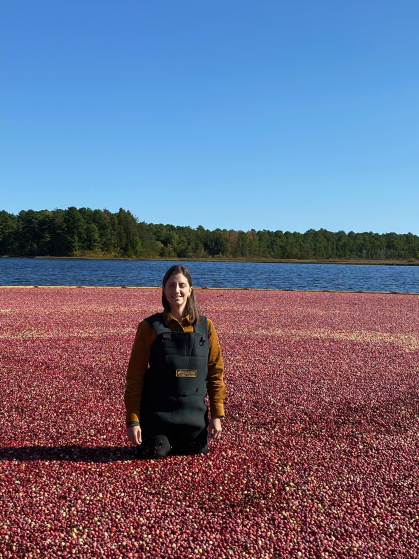Pass the (Rutgers) Cranberry Sauce

The top provider of cranberry varietals in North America, Rutgers' breeding program welcomes first new director in three decades
Quick quiz: Rutgers is the No. 1 North American provider of which red fruit?
No, we are not talking about the Rutgers tomato, although this Thanksgiving staple also pairs well with salads and makes a great sauce.
Seven varieties of cranberries developed at Rutgers – grown in bogs from New Jersey to Wisconsin and Massachusetts to British Columbia – make up much of the tart fruit found in your cherished Thanksgiving side dishes.
Those varietals, bred for productivity and fruit quality, were patented and released from the Rutgers New Jersey Agricultural Experiment Station’s cranberry breeding program at the Philip E. Marucci Center for Blueberry and Cranberry Research and Extension in Chatsworth, NJ.
And for the first time in more than three decades, a new breeder is overseeing research at this nationally recognized program. Gina Sideli, an assistant professor of plant biology with the School of Environmental and Biological Sciences at Rutgers-New Brunswick, took over in September for longtime Marucci Center director and professor emeritus Nicholi Vorsa.
Raised in New York’s Long Island, Sideli comes to Rutgers from the University of California at Davis where she worked in walnut and almond research for eight years. She was drawn to Rutgers by the opportunity to continue her work developing new perennial crop varieties.

“Unlike corn or beans, which are short-lived and can produce new varietals every few years, perennials are more of a challenge because it takes 15 to 20 years to develop a new variety,” said Sideli, who plans to see her predecessor’s research through, which should yield new cranberries resistant to fruit rot within the next few years.
The fungal disease can strike cranberry bogs in late summer and early fall during extended periods of heat and humidity. The disease, which has flourished especially in recent years as climate change brings extreme weather patterns, can decimate 10 to 20 percent of harvests – significantly eating into farmers’ profits.
Sideli also arrives in the Pine Barrens with goals of her own, including modernizing the way the center monitors crops through a process called high-throughput phenotyping.
“The traditional way is to take individual measurements or visuals to assess each plant,” she said. “But by taking a drone into the bogs, we can take thousands of pictures and analyze them with one algorithm. This will get us data much faster and increase breeding efficiency so we can make selections faster.”
She also plans to screen the genetic sequence of individual cranberry plants in the hopes of identifying sequences that can be used to cultivate varietals with disease resistance and less acidity.
“Everybody would love a sweeter cranberry,” she said. “We don’t know if that is possible, but maybe if we lower the acid levels it may not be as tart or sour, and we might perceive it to be sweeter.”
Sideli is excited about working with a nutritional crop, noting cranberries contribute to urinary tract health and are high in antioxidants.
“I think more people would find ways to eat them if they understood the health benefits,” she said. “I’ve had cranberry salsa twice now. If you swap out tomatoes for cranberries and peppers, onions and herbs and spices, you can have fresh salsa in the fall and winter. I was skeptical at first, but on a tortilla chip it was very good.”


